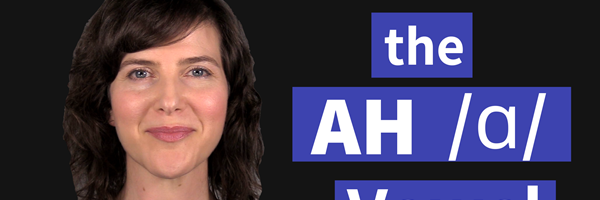(Video Transcript)
The EE /i/ vowel
The EE vowel is in the words see, beat, and video.
The EE vowel is considered a tense vowel, which means there is more tension within the face, lips, and tongue when you say this sound. Try this out: Put your hands under your chin when you say “eeee”. You should feel tension in the muscles just below your jaw as you say this sound. Eee, ee, ee,
How to make the EE /i/ vowel
To make the EE vowel, the tongue tip is down and touching the back of the bottom teeth. The middle part of the tongue is arched up towards the roof of the mouth. The tongue is tense and spreads flat in the mouth. The lips spread out slightly. EE.
Vowel length in American English
Listen to how I pronounce the EE vowel in the words see, seed, and seat. See. Seed. Seat. See. Seed. Seat. Which word had the longest EE sound? Listen again: See. Seed. Seat.
In American English, some vowels are pronounced slightly longer depending on the word position in which they occur.
When the EE vowel comes before a voiceless consonant, like in the word seat, the EE vowel is said the fastest of the three options. Seat.
When the EE vowel comes before a voiced consonant, like in the word seed, the EE vowel is said for a longer duration than before a voiceless consonant. Seed. Seat.
And when the EE vowel is in an open syllable, like in the word see, the EE is said for the longest amount of time. See. Seed. Seat.
Vowel gliding in American English
It is also important to know about vowel gliding. Native speakers will glide their voice downward when EE is at the end of a word. Listen to how I say see. See. It’s not see, with a flat, clipped EE sound. It’s see, with an elongated EE sound that glides down in pitch. In American English, it is common to hold out the EE sound when it occurs at the end of a word and glide down in pitch. See.
The EE /i/ vowel in slow-motion
Here is the EE vowel in the word see.
The jaw is closed, and the lips spread out. The middle of the tongue is arched up towards the roof of the mouth, and the tongue tip is down behind the bottom front teeth.
Stressed EE vs. Unstressed EE
As I mentioned earlier, when EE is in a stressed syllable, the pitch of the voice glides up and then down. See. EE. But when EE is in an unstressed syllable, the pitch of the voice is flatter and lower, and the vowel is said quicker. EE. The EE vowel is unstressed in the word eject.
On the left is the EE vowel in the stressed position, like in the word see. And on the right is the EE vowel in the unstressed position, like in the word eject. Notice how the jaw is more closed in the unstressed EE position. The lips are also spread out less. The EE vowel in eject also does not have the gliding effect because it occurs at the beginning of a word.
Stressed EE. See. EE. Unstressed EE. Eject. EE.
Practice words and sentences
Here are some practice words and sentences.
Country. EE. Country.
I live in a beautiful country.
Agree. EE. Agree.
I agree - that is the best option.
Repeat. EE. Repeat.
Can you repeat the question?
Emit. EE. Emit.
The sun emits many types of rays.
Easy. EE. Easy.
That one was too easy!
Delete. EE. Delete.
I’m going to delete the file.
Thanks so much for watching! And I'd love to hear from you - contact me to learn how we can work together to perfect your American English pronunciation!



